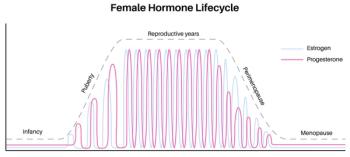
Excess Intake of Ultraprocessed Foods is Tied to Higher Cardiometabolic Risk, AHA Advisory Panel Says
The Advisory Panel laid out 4 priority actions for clinicians, policy makers, and industry.
A diet in which
“The relationship between UPFs and health is complex and multifaceted,” Maya K. Vadiveloo, PhD, volunteer chair of the writing group for this Science Advisory, said in an AHA press release. “We know that eating foods with too much saturated fat,
UPFs are industrial formulations that contain additives or ingredients rarely used in home kitchens and often undergo multiple physical or chemical processing steps. The advisory’s 10-member writing committee reviewed an umbrella survey of epidemiological meta-analyses and a separate dose-response meta-analysis that together encompassed dozens of prospective cohort studies drawn from diverse populations. Evidence strength was graded as “convincing” for cardiovascular mortality, “highly suggestive” for diabetes and
Across those cohorts, risk began to climb once UPFs provided more than 10%-15% of total energy—roughly two standard servings per day for most adults—suggesting a practical clinical threshold for dietary counseling.
Mechanistic data cited in the report point beyond excess calories: a controlled-feeding experiment showed that the common emulsifier carboxymethylcellulose altered the gut microbiota and metabolome, while high-heat processing and food-grade plastics introduce compounds such as acrylamide, bisphenols and phthalates, all linked to inflammation and vascular injury. Possible pathways summarized in the advisory include displacement of nutrient-rich foods, hyper-palatability that drives over-eating, endocrine disruption and microbiome-mediated metabolic effects.
To translate the evidence into action, the panel proposed 4 substantive changes:
- Shift dietary patterns toward vegetables, fruits, legumes, whole grains, nuts, seeds, nontropical plant oils, seafood, and lean proteins, replacing most UPFs.
- Adopt multipronged policies—front-of-package warning labels, procurement standards, and taxes—aimed at the HFSS (high in saturated fat, added sugars, and sodium) UPFs most strongly linked to disease.
- Increase research funding to clarify mechanisms (eg, effects of additives, food matrix alterations) and to build comprehensive food-composition databases.
- Modernize FDA oversight of food additives, streamlining evaluation and re-evaluation of chemicals with plausible cardiometabolic harm.
Future research priorities outlined in the document include clarifying whether the 10 %-15 % “permissible level” applies uniformly across UPF subgroups, determining additive-specific effects, and assessing outcome consistency in racially and ethnically diverse cohorts. The authors also call for studies that compare metabolic responses to nutritionally similar UPF and non-UPF foods and for policy experiments that monitor the cardiometabolic impact of taxes or additive bans.
Clinicians, the authors conclude, need not wait for more definitive mechanistic data to act: “Reducing HFSS UPF intake below roughly one-tenth of total calories is a prudent target while scientific refinements continue.”
References:
- Vadiveloo MK, Gardner CD, Bleich SN, et al. Ultraprocessed foods and their association with cardiometabolic health: Evidence, gaps, and opportunities: A science advisory from the American Heart Association. Circulation. Published online August 8, 2025. doi:10.1161/CIR.0000000000001365
- Excessive ultraprocessed foods (UPFs) and poor nutrition tied to poor health. News release. American Heart Association. August 8, 2025. Accessed August 8, 2025.
https://newsroom.heart.org/news/excessive-ultraprocessed-foods-upfs-and-poor-nutrition-tied-to-poor-health
Newsletter
Enhance your clinical practice with the Patient Care newsletter, offering the latest evidence-based guidelines, diagnostic insights, and treatment strategies for primary care physicians.

























































































































































































































































































